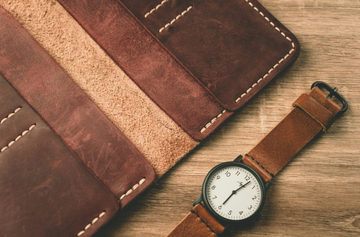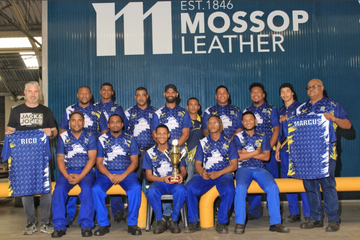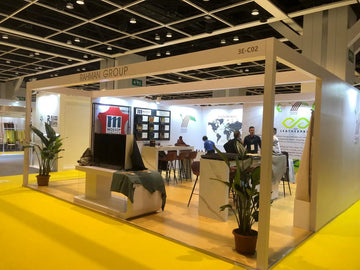
When snagging the perfect pair of shoes, one is often met with a bewildering array of choices, from the synthetic to the timeless allure of leather. This piece aims to delve into the virtues of leather footwear, in stark comparison to its synthetic counterparts, exploring facets such as durability, comfort, style, sustainability, and the peculiar ageing process that renders leather so distinct.
Durability: Leather's Indomitable Tenacity
The staying power of leather footwear is genuinely unparalleled. Sourced from the hides of a byproduct of the food industry, genuine leather possesses an innate resilience, withstanding the daily trials and tribulations of different terrains and activities. While synthetics might boast initial durability and affordability, they often underwhelm with the relentless march of time, offering a lifespan far shorter than their high-quality leather counterparts.
Comfort and Breathability: Leather vs. Synthetic
In footwear, comfort reigns supreme, and leather holds the sceptre. As a porous material, leather allows for a natural breathability that keeps one's precious feet cool and dry. This breathability not only wards off the perils of moisture accumulation but also thwarts bacterial mischief and unwelcome odours. Moreover, leather possesses the extraordinary ability to mould itself to the contours of the wearer's feet over time, crafting a bespoke and comfortable fit. While synthetic materials may parade their breathability, they often lag in genuine leather's moisture-wicking prowess and overall comfort.

Style and Versatility: Timeless Elegance vs. Modern Allure
Leather footwear is an enduring symbol of sophistication, transcending the fleeting whims of fashion and remaining relevant through the ages. Its intrinsic beauty and versatility make it the perfect companion for various occasions, from the most formal gatherings to leisurely outings, to the intensity of work. Leather shoes radiate an air of sophistication that complements a myriad of outfits. In stark contrast, synthetics may flaunt contemporary designs and flamboyant hues but sorely lack the timeless charm and classic allure that leather effortlessly embodies.
Sustainability and Environmental Impact
In this era of heightened environmental awareness, leather, when responsibly sourced and tanned using eco-friendly methods, emerges as the verdant choice compared to certain synthetic materials. The natural biodegradability of leather diminishes its long-term impact on landfills. With proper care, leather footwear boasts a longer lifespan, diminishing the clamour for frequent replacements and mitigating overall waste generation. A caveat, however, is crucial – not all leather production practices adhere to eco-friendly principles. Some tanneries have cast a shadow over the industry with their intrusive processes. Yet, fear not, for in today's age, discerning brands and consumers can vet these tanneries through the Leather Working Group (LWG) and the Sustainable Leather Foundation (SLF), beacons guiding us toward a sustainable future with responsible leather.

The Myth of Vegan Leather: Debunking the Notion
In the ever-evolving dance of fashion and sustainability, a myth persists – that vegan leather, with its l "vegan" title, is inherently more environmentally friendly than genuine leather. Let us peel back the layers and unravel the tale of leather production, exposing the environmental impact of both options.
Vegan leather, the name to start with, stands for nothing. There is no such thing as Vegan leather; there is leather, and then there is other alternatives. So synthetic or plant-based materials are predominantly concocted from polyurethane (PU), polyvinyl chloride (PVC), and petroleum derivatives. The production of these synthetics unfurls a tapestry of harmful chemicals, including volatile organic compounds (VOCs), orchestrating a symphony of air pollution and ozone layer destruction.
On the other hand, genuine leather, a product of animal hides, often deemed byproducts of the meat and dairy industries, is a testament to sustainable resource utilisation. Every part of the animal serves a purpose; without the leather industry, the hides would have to go to specific landfills. Additionally, through transparency, we can follow up on food industry practices, good animal husbandry and best farming practices. Cattle can form part of regenerative agriculture practices involving reducing run-off, improving water quality, boosting wildlife habitat, and restoring the environment.
The Carbon Footprint: Real Leather's Unfair Reputation
A typical yarn-spun is that the production of leather leaves an indelible carbon footprint, a blight on the environment. Yet, this perception is a mere mirage. When tracing the life cycle of a product, from raw material extraction to manufacturing, transportation, and eventual disposal, the environmental impact of leather is akin to or even lower than its synthetic alternatives.
Leather Waste: A Sustainably Sensitive Matter
Another crucial note dances upon the stage of waste generated by the fashion realm. Products swathed in vegan alternatives, often frail in durability, crumble faster, necessitating more frequent replacements and, inevitably, swelling the waste domain. If treated with care, leather products can endure for epochs, diminishing the call for incessant replacements and reducing the overall environmental footprint.
The Power of Tanning: Eco-Friendly Innovations
The age-old process of tanning, once a pariah due to its reliance on chemicals, has undergone a metamorphosis. The leather industry now champions sustainable tanning methods., utilising natural extracts and their stringent controls in LWG-affiliated tanneries. Further minimising the carbon footprint of genuine leather.
These LWG tanneries also have to ensure zero chromium six is produced. Quick fact: Chromium 6 is associated with health problems. Chromium 3 is what is used to tan the leather, and it’s actually necessary for human nutrition; you can take it as a supplement if you like.

Balancing Sustainability and Style
In the grand tapestry of fashion, choices wield power to make a difference. Choosing responsible leather champions sustainable practices and bestows upon you the joy of high-quality, enduring products. Investing in this leather – be it material, goods, or PPE – serves as a declaration of style, durability, and responsibility toward our cherished environment.
To End
Leather's ability to brave time's tempest offers an airy haven for one's feet, and gracefully age ensures its reign as a timeless, reliable, yet elegant option for footwear manufacturers, brands and aficionados. However, in the era of heightened sustainability awareness, there are always improvements, and with the amount of science and technology involved in leather production, it seems possible that this wonder product will keep making a positive impact. The choice between leather and synthetic footwear, dear readers, is a personal odyssey guided by individual preferences and priorities. Armed with the knowledge of their distinctive qualities, one embarks on the quest for the perfect pair of shoes – a decision not merely of fashion or practically but a declaration of one's values in the grand tapestry of life.




